Renowned designer Darryl Carter bought his Washington D.C. home in 1997 in part for its unusual flat-front Beaux Arts facade. It was once the grand home of the chancellery of Oman. “The bones were there, but the space needed obvious cosmetic changes,” says Darryl. “And of course there was gray carpeting as far as the eye can see.”
The self-described purist saw to it that the home’s generous proportions were restored before turning his attention to the decor. His key tenets—a neutral but carefully considered palette, an elevated blend of the classical and the modern, and the pursuit of timeless, not trend-bound, designs—are evident throughout.
“White is generally the most sublime backdrop for beautiful objects,” the designer asserts. And while his interior color scheme was characteristically restrained, his imagination was not. Whether it’s primitive figurines or a canopied bed, visual delights abound—the pale foundation making them all that more impactful. “Some were acquired during travels, some were commissioned under my care, and some were gifts—all meaningful to me in some way or another,” he says.
It’s hard to imagine the designer ever considered another walk of life, but “decorator” is, in fact, Darryl’s second act; he began his career as an attorney. “Even during my time as a lawyer, I would recreationally flip properties,” he reveals. “One of them, in 1997, landed on the cover of Metropolitan Home magazine. I suppose you could say that my career found me.”
While Darryl has happily called this space home for the past 18 years and has no plans to leave it, his interiors may have an expiration date. “I imagine this is the case with most designers. Your own home tends to become a laboratory,” he says. “The house has entirely changed on multiple occasions.” In some instances, he has moved from his tendency for the spare to the polar opposite (case in point: the over-the-top daybed in his living room). “It was more practical than the former grand piano that I didn’t play,” he says. “So I traded a beautiful object for a beautiful object you can sit on.” Whatever his home’s future holds, it’s a given that the welcoming spirit will always remain.
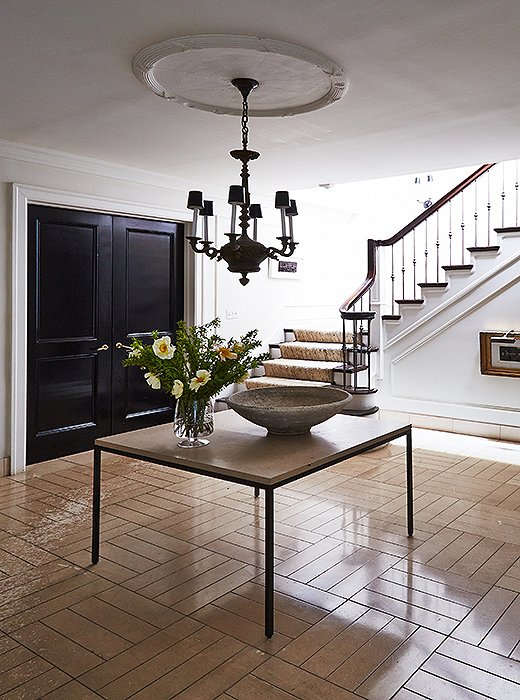
You might not guess it from his pristine spaces, but Darryl’s design philosophy is refreshingly forgiving. “What’s the point of having a house if you cannot comfortably live in it?” he says. “This is not a ‘shoes off’ situation. Anything that is harmed can be repaired.” The foyer houses his biggest design risk: a headless horse statue.

There is a headless horse in my foyer. Did it pay off? Yes, it makes me laugh every day in passing.
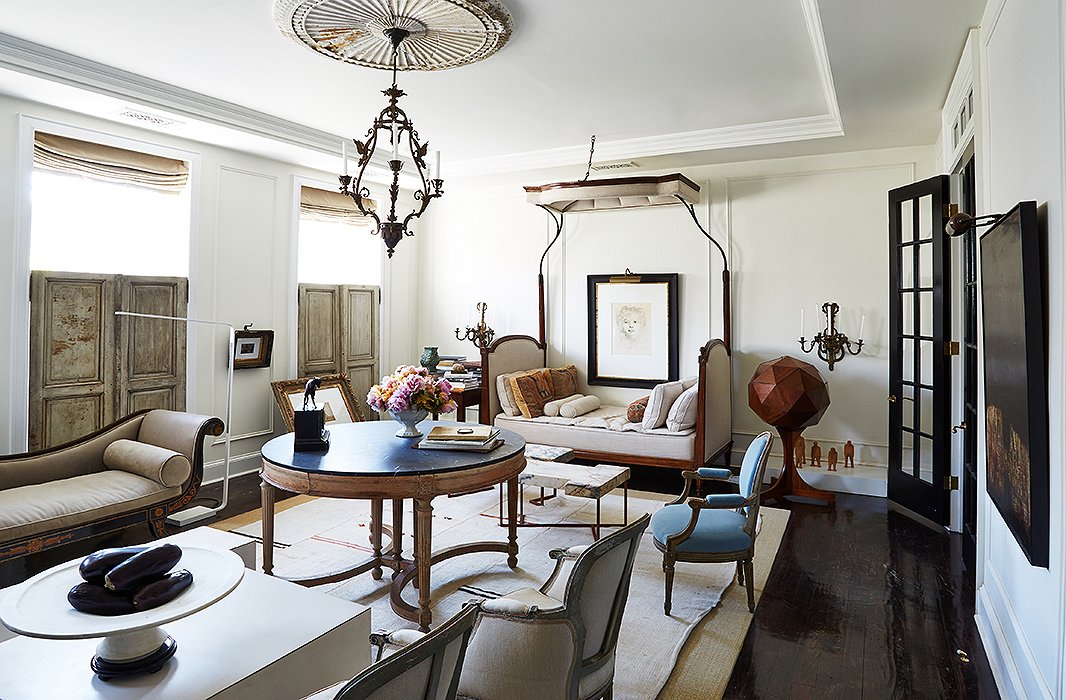
His master sitting room houses many treasures: “I would vigilantly suggest,” says Darryl, “in spite of the world that we live in that inspires instant gratification, that you take your time and not gather all of your furniture from a single venue on a weekend spree.”
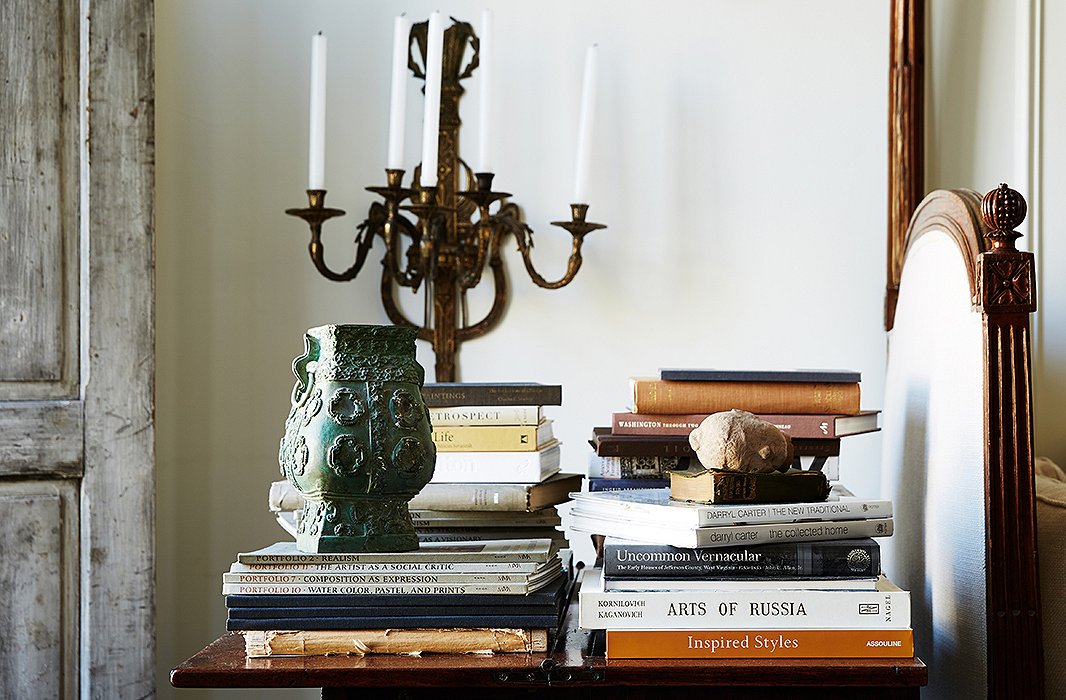
In the lower sitting room, small stacks of Darryl’s favorite art and design books are joined by an eye-catching bronze vase that was “a precious gift from my father.”
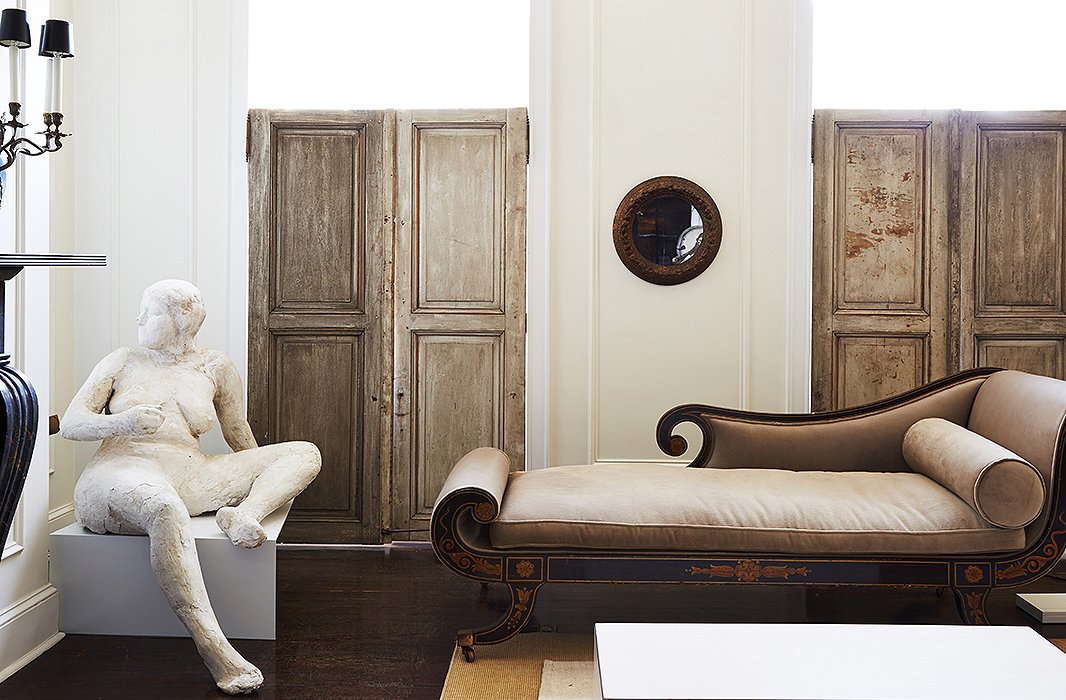
If there is a most eyebrow-raising design moment—aside from the headless horse—it would have to be the sculpture of a woman in repose in his lower sitting room. “I get many mixed opinions on this particular piece,” Darryl admits. “There is something very funny about her to me, which is the point. Many have commented otherwise, which makes me love her more.”

An abstract is placed above one of the home’s many mantels. “Some of my art is precious, some of it found,” Darryl says, “but each is very evocative to me on a very personal note. Some of the pieces serve almost as a Rorschach test in regards to my guests.”
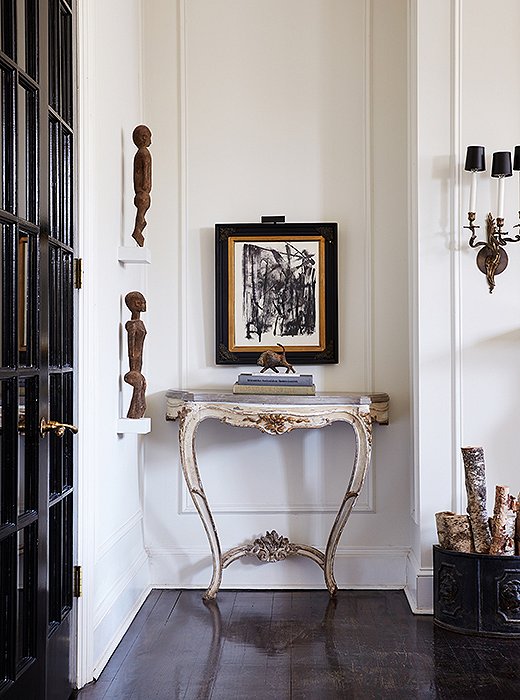
“Almost everything in the house has a story,” Darryl says. “I can’t say there is anything in my house that I acquired that didn’t move me for some reason or another.”

I think your home should be an individual expression of yourself, so I have a hard time getting my head around generic objects. And when I say this I don’t mean precious or expensive, I mean thoughtful and original.
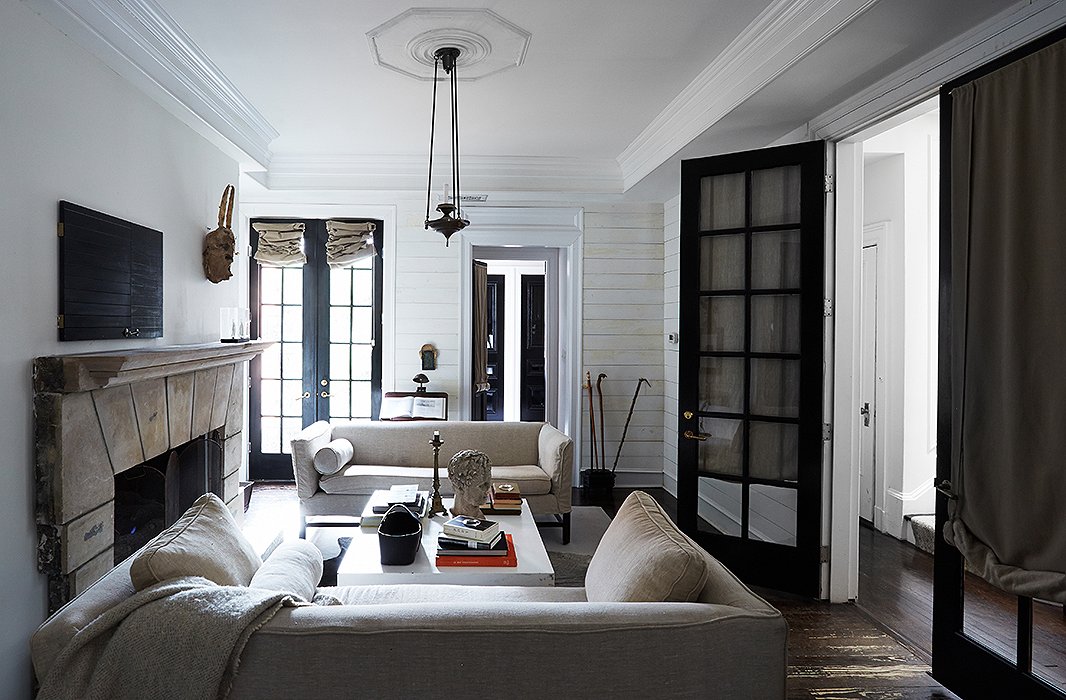
“When I just want to escape by myself, I often land in my master sitting room,” Darryl says. To cozy it up for his tall frame, he altered the sofas so that the arms recline on one side. “I always wanted to spend time in this space, and finally I found a way to do it. This really speaks to the house in its entirety in terms of how I live in it. Over the years, it has been altered purposefully to suit life.”
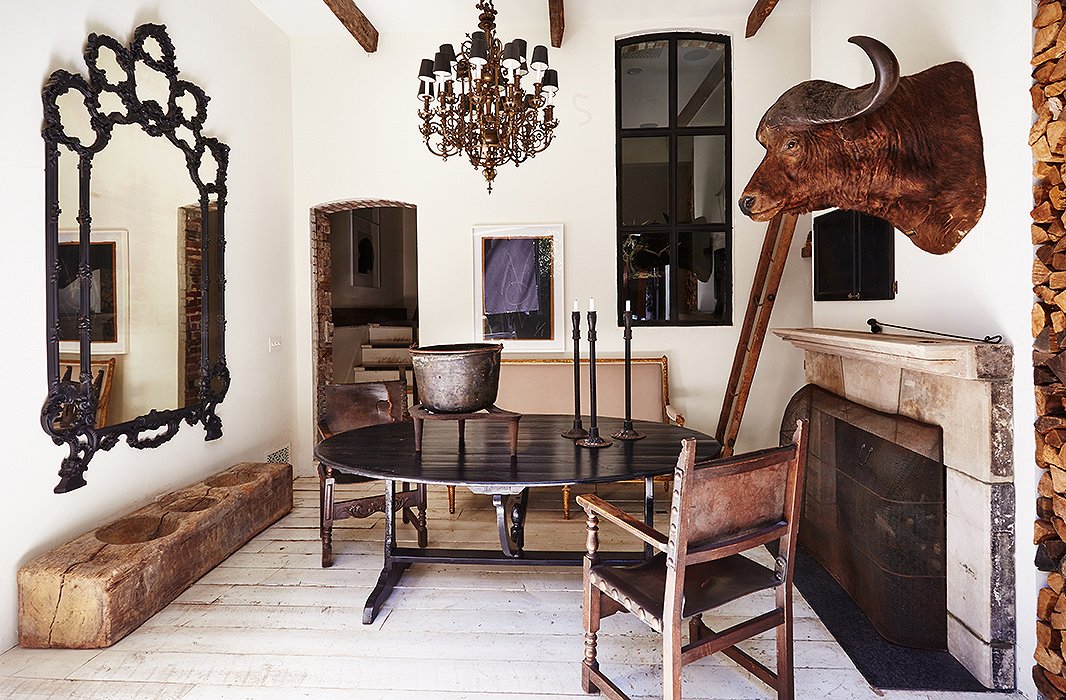
In the lower family room, an antique African water-buffalo head and a 19th-century ladder bought at a Paris flea market are conversation starters. Most of the floors in the home—including these—are the original oak.
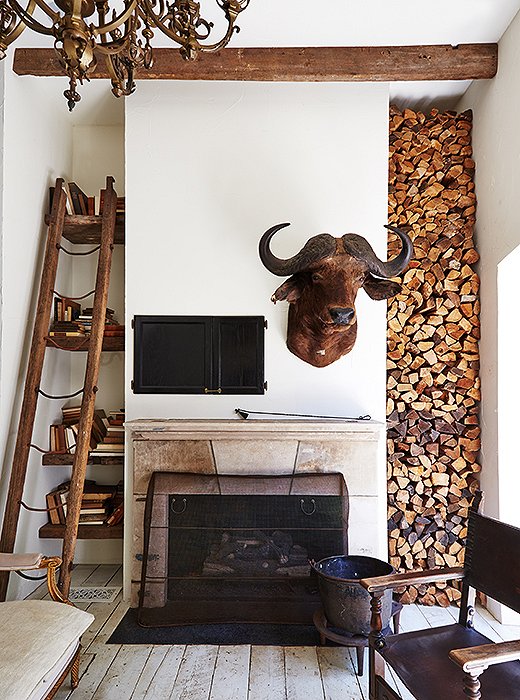
Interesting objets abound in the lower family room. “There is no calculus to how I land on the contents of a room. Each piece is chosen for its individual intrigue,” says Darryl.

I think the most important thing one should take into account when they are designing their home is interest rather than instant.
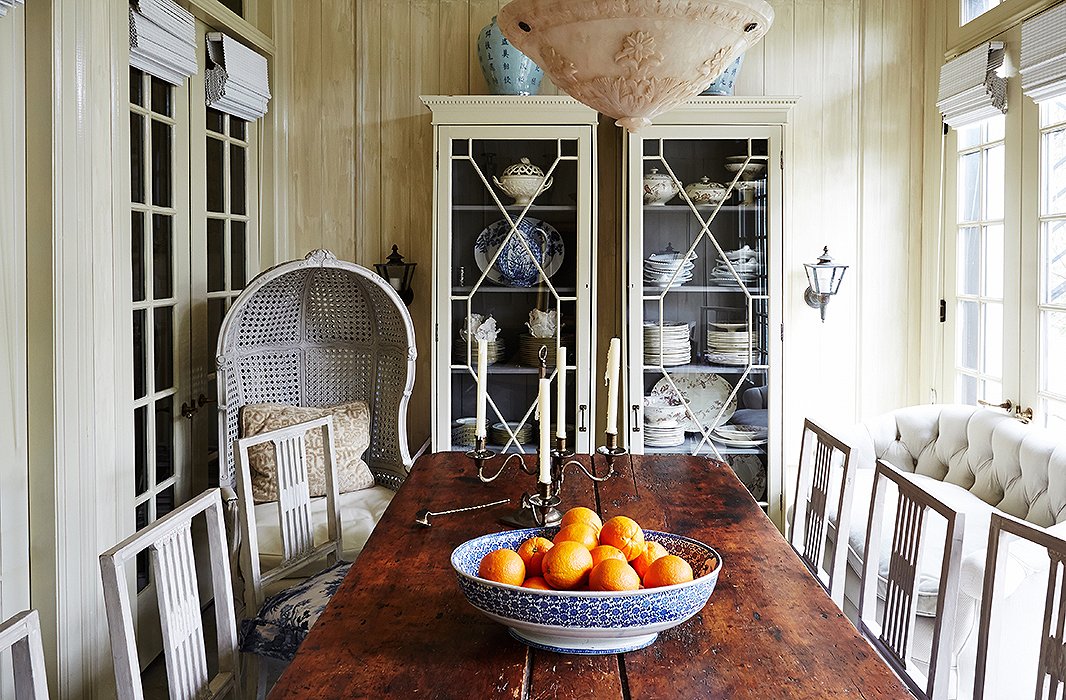
The breakfast room, and its adjacent outdoor terrace, is where Darryl gathers most with friends. “I think what is most surprising to people when they come to my house is that it is quite lived-in—I am good with a spill, and I don’t just say that to comfort the guilt-stricken guest,” he laughs.
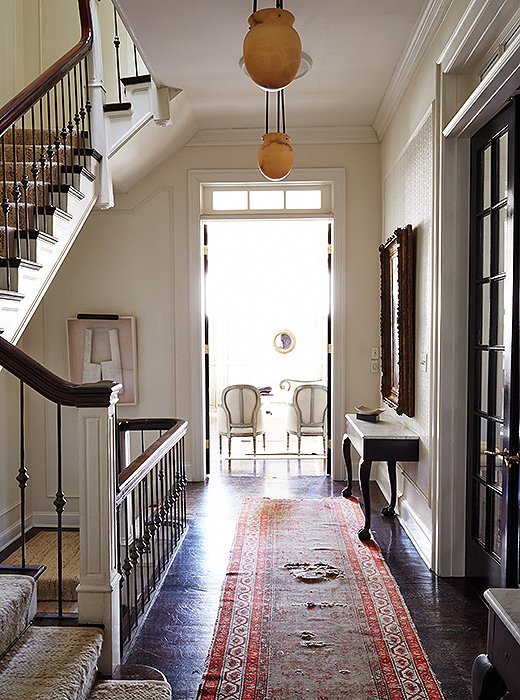
The airy second-floor landing, with its antique alabaster pendants and a gorgeous distressed runner, captures Darryl’s love of timeworn treasures that are none too precious. “My dog has done quite a number on all of my floors, both wood and stone.”
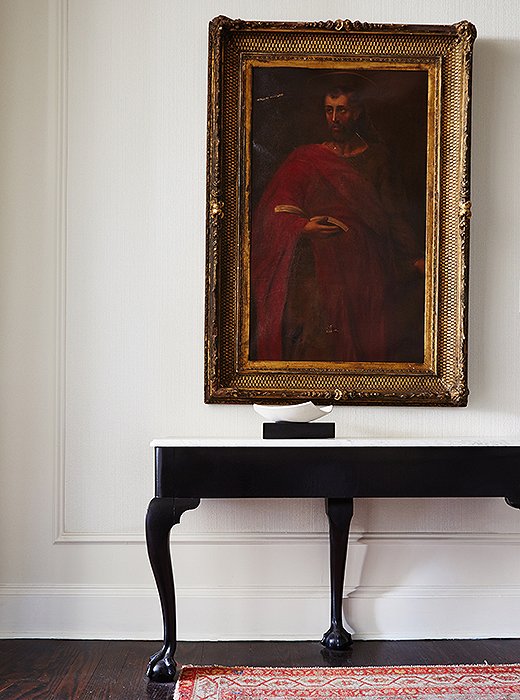
Delicate details make all the difference: Here, on the second-floor landing, the picture molding surrounds a highly textural woven wallpaper hand-painted the same color as the walls. “It’s one more subtle detail that makes a space feel more intimate,” Darryl notes.
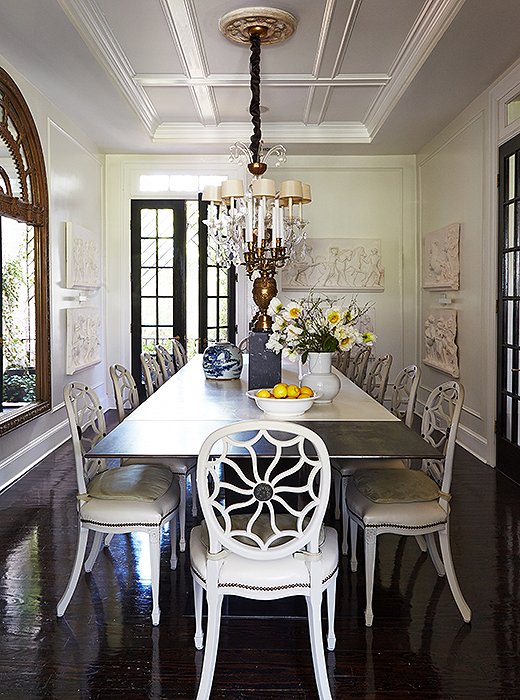
Darryl’s steel-and-concrete dining table is surrounded with hand-painted and -gessoed chairs chosen as a stylistic counterpoint to the table’s modern form. The seats, reupholstered with suede cushions, and a Murano glass chandelier complete the mood. “I had the candle sleeves raised, and the linen shades were custom for the piece,” he says.

Light informs so much of the experience in a space: Imagine a dining table with a regimental row of recessed lights on at full blast versus a beautiful bronze chandelier.
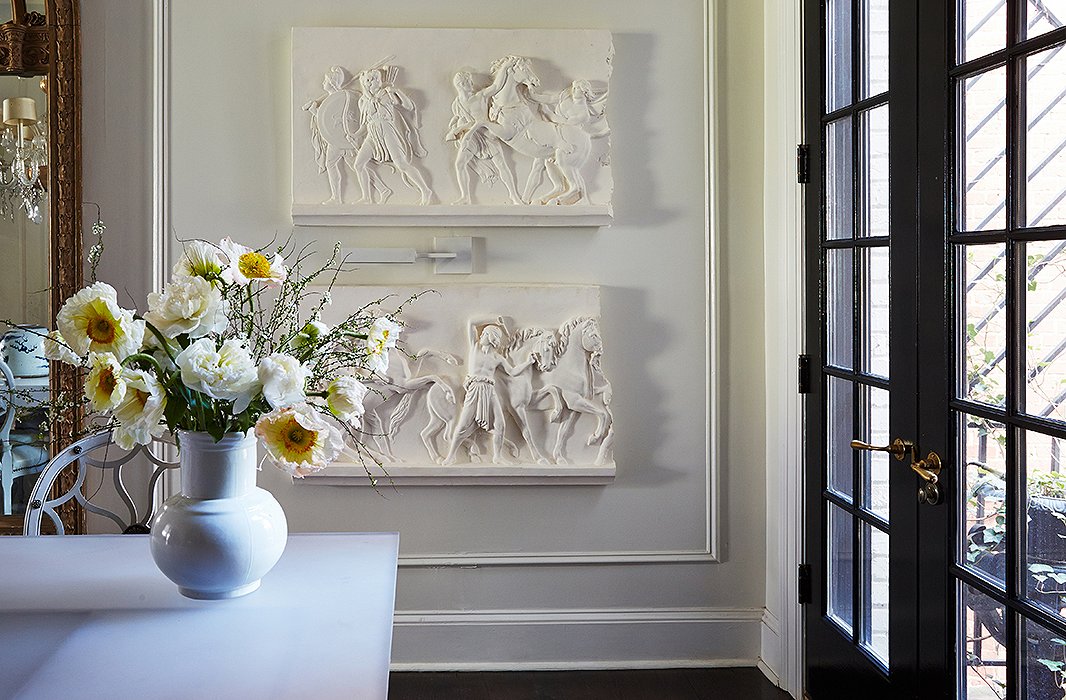
Known for his studied eye for art, antiques, and artifacts, Darryl commissioned a local plasterer to recreate these cast friezes inspired by the painting Entry of Alexander into Babylon. “To be clear, I would never place art as a decoration in a room. I would far more be prone to design a room around the art.”
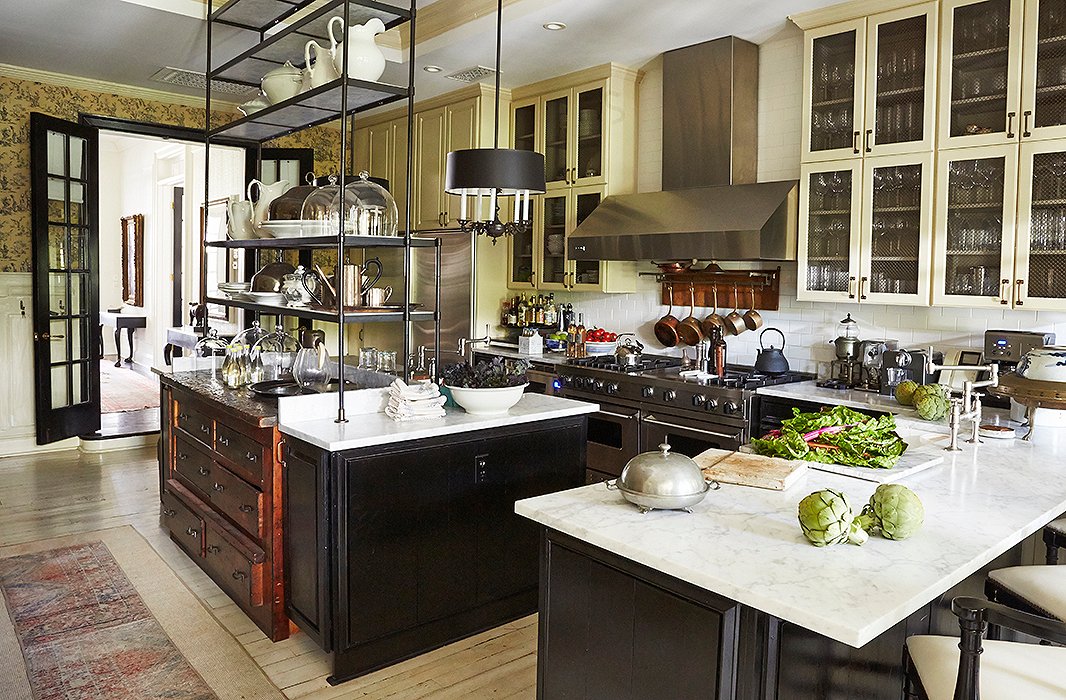
With an impeccably designed kitchen—reclaimed hardwood, black lacquered cabinets, Carrara marble counters, an iron étagère atop the island, a state-of-the-art range—you might expect Darryl to be a master chef. Au contraire. “I do not cook. At all. Anything,” he says with a laugh. “I will occasionally do the dishes.”

“I love to host,” Darryl says. “Most often, I am the venue, and one of my friends is the chef. They like to complain how challenging it is to prepare a meal here because I don’t know how to tell them where anything is,” he laughs.
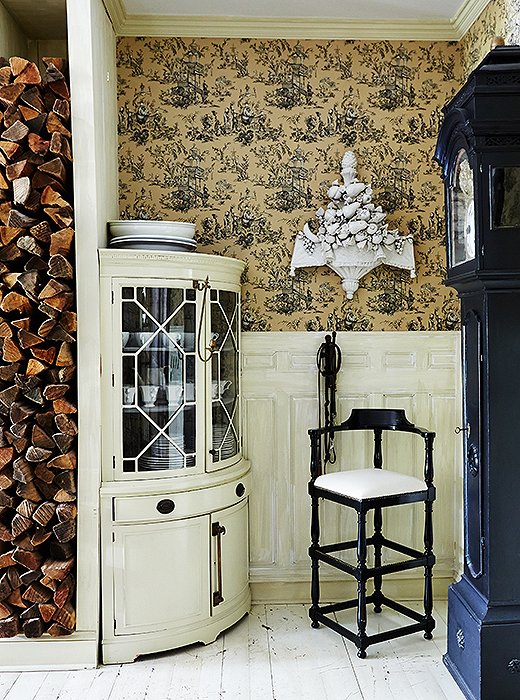
There are moments Darryl pushed his own boundaries, such as with this bold kitchen nook. “I am not generally a fan of vivid pattern, so this is a bit out on the limb, even for me,” he says of the toile-papered walls. “I often will use a bold pattern in an otherwise monochromatic house in a hall closet simply for the surprise of it.”

The cozy bar area, tucked away behind heavy wooden doors, exemplifies Darryl’s enduringly chic style—tranquil yet multilayered, polished yet rich with patina, impeccably curated yet lived-in—all chronicled in his books, The New Traditional and The Collected Home.

I think what is most surprising to people when they come to my house is that it is quite lived-in—I am good with a spill, and I don’t just say that to comfort the guilt-stricken guest.
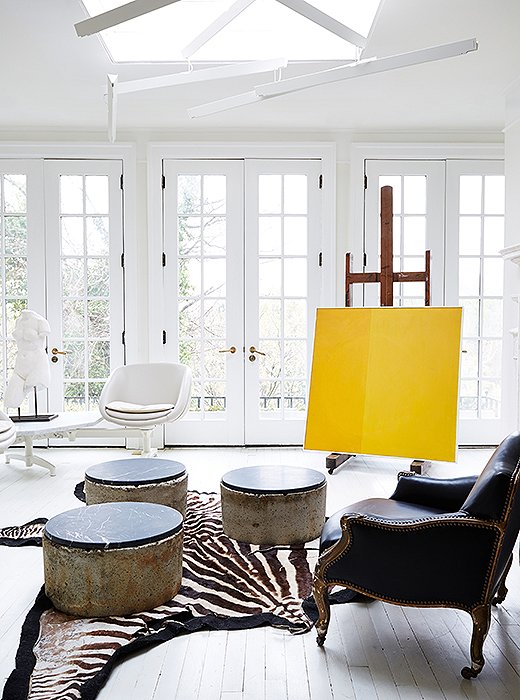
Darryl’s guest sitting room is home to a chair set plucked from what once was “a midcentury L-shape airport sofa,” which he wholly reinvented—from orange vinyl and a chrome base to kidskin and white powder coat.
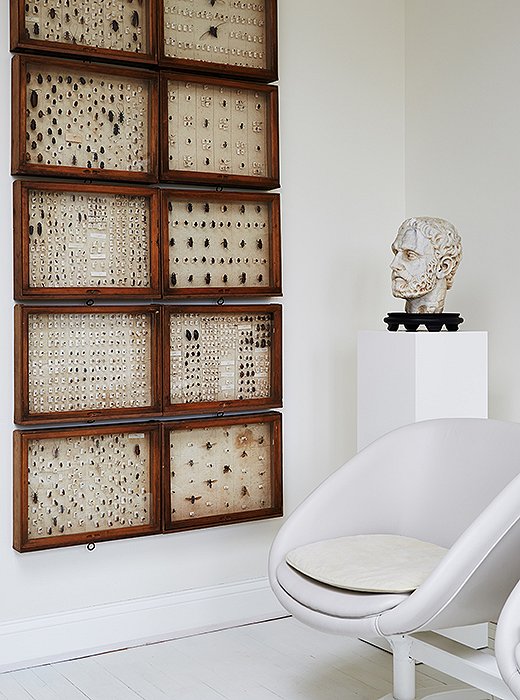
A 19th-century insect collection reflects Darryl’s philosophy for embracing the unusual and the timeless: “I would encourage anyone to be confident and buy things that they like that will withstand the test of time.”
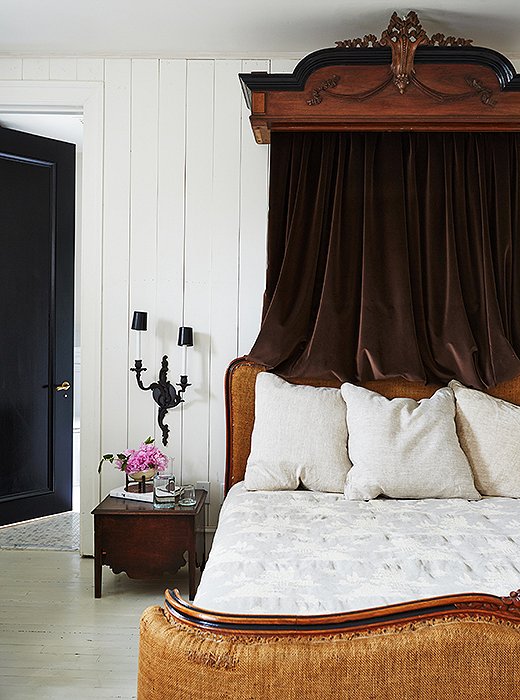
Darryl chose this guest bed for its burlap upholstery and articulated frame, which he embellished with black paint. The canopy—likely the former top of an armoire, he notes—is draped with velvet fabric. “I am generally not a fan of a canopy,” he says. “But I felt it completed the space.”
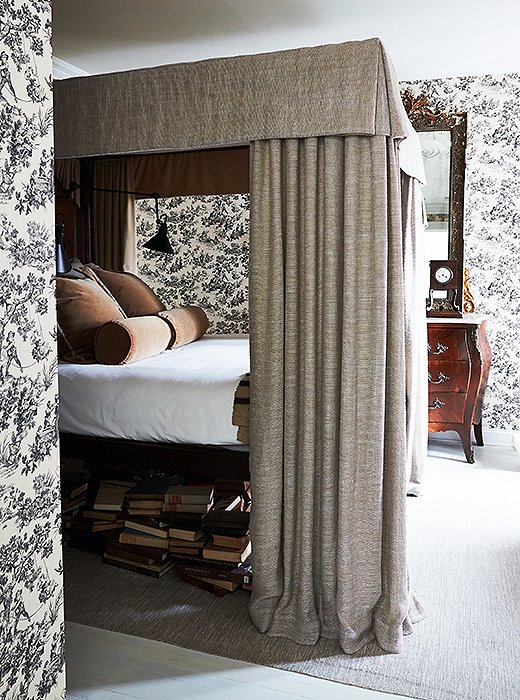
“I have to say I sort of surprised myself with the toile,” Darryl says. “But I thought I would have a little fun with this guest room and make it somewhat opulent for the occasional visitor.”
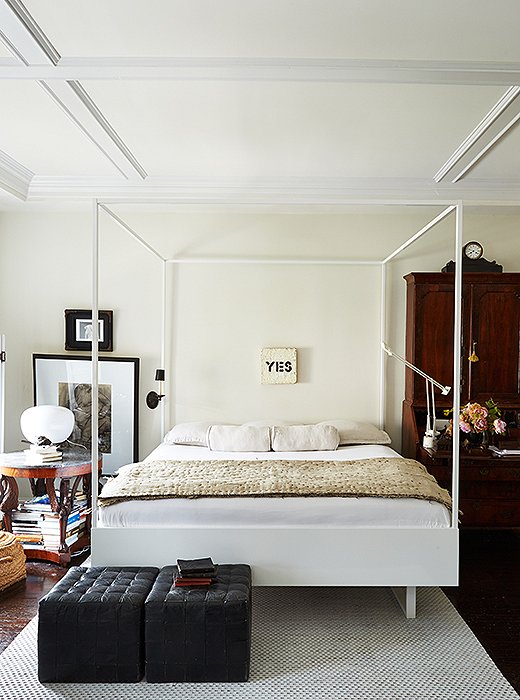
“The master bedroom is where my most valued keepsakes are in the house because this is where I tend to enjoy them best,” Darryl says. The “Yes” sign (encaustic with a stenciled graphic) above his bed is by his artist friend Julie Wolfe. “It is rather contrarian if you know me well, so it kind of made me laugh, which is a reason I gravitate toward certain art.”

Among the features that attracted Darryl to his home were its eight fireplaces—including this one in the master bathroom. “I gravitate toward certain parts of the house seasonally, and obviously I enjoy lighting a fire, particularly in the fall and winter.”
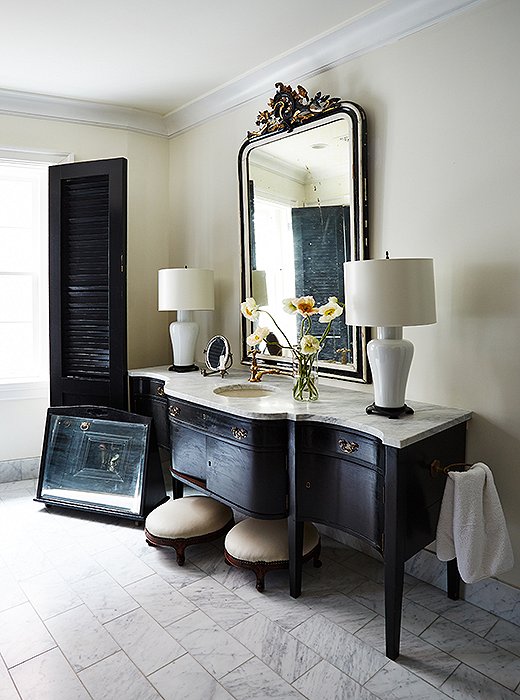
“The master bathroom is generally and hopefully a respite,” says the designer. “When I redesigned this space, I was very aware of how it needed to function for me.”
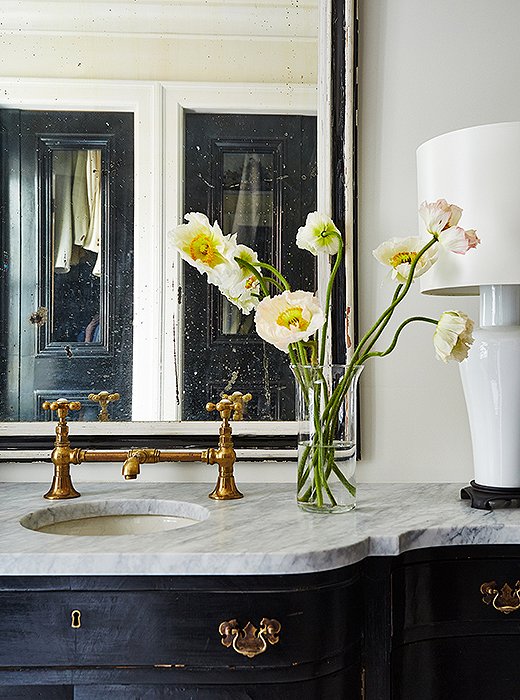
An antiqued mirror and gold fixtures are intermingled with white porcelain lamps on the sink vanity in the master bath, which is divided into a dressing room, a water closet, and a shower and tub room. “It was designed with a certain traffic mentality for getting ready quickly,” Darryl says of tailoring the space to fit his busy daily life.
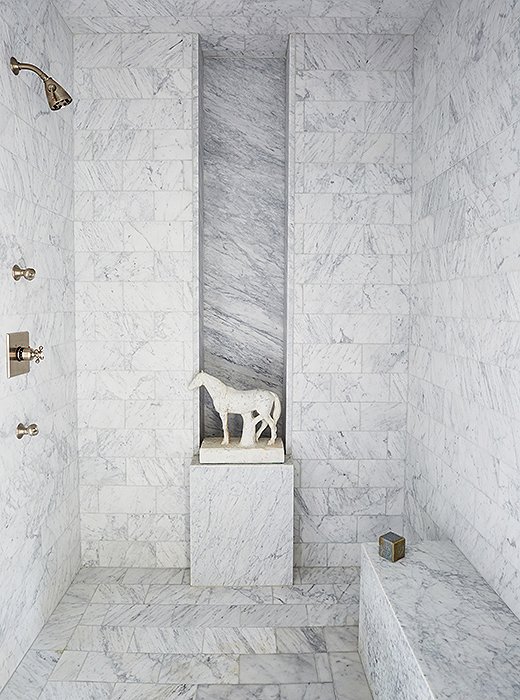
Darryl’s design for the master bath is streamlined and elegant—but not without intrigue. “I have a fascination with horses. I think they are beautiful creatures,” he says. “I also have an incredible capacity to shop from a moving car, and I actually saw this horse from a window of my car in traffic.”

I embrace all sorts of architectural and interior styles. I don’t think there is a singular house that could embrace my aesthetic completely... Over the years, the house has been altered purposefully to suit life.
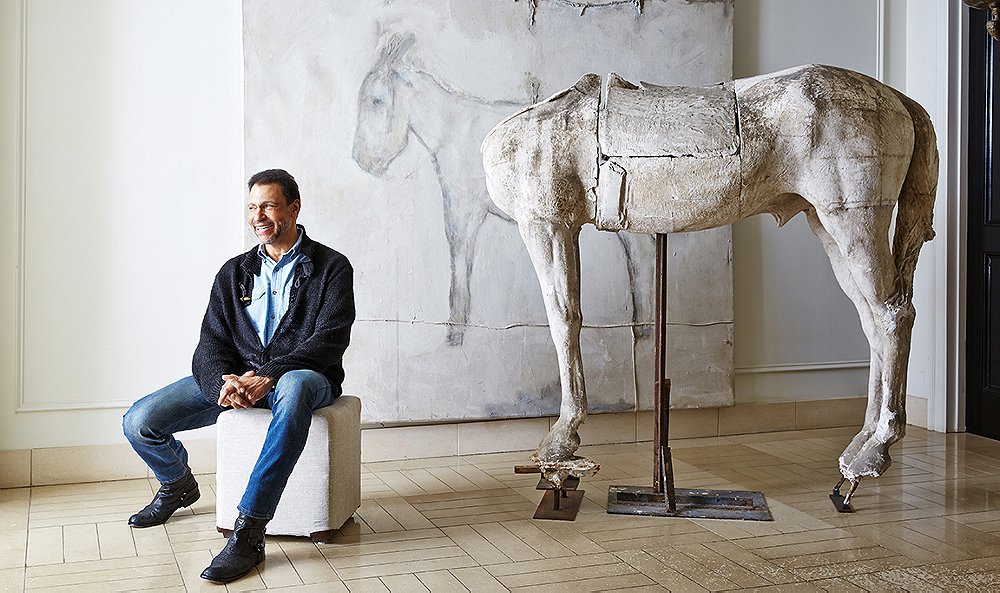
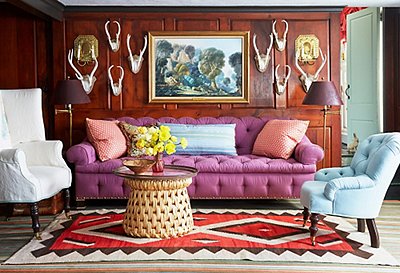

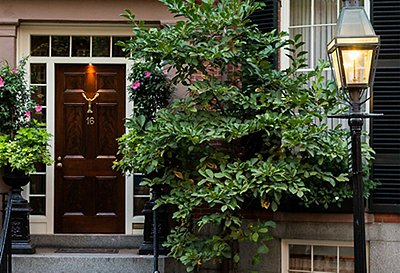
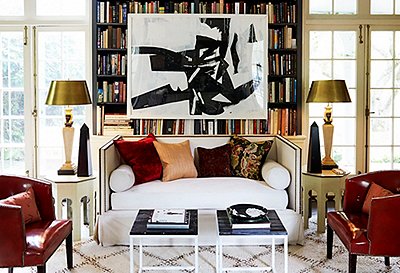
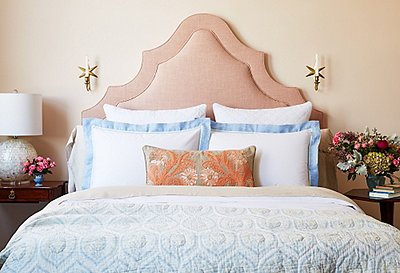
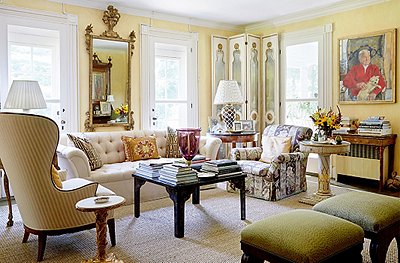
While Darryl Carter’s style may be more traditional than mine, he is a master at mixing periods pieces with more modern ones. I love his spaces and his books. Just brilliant!
Having Nice Day Darryl Carter’s